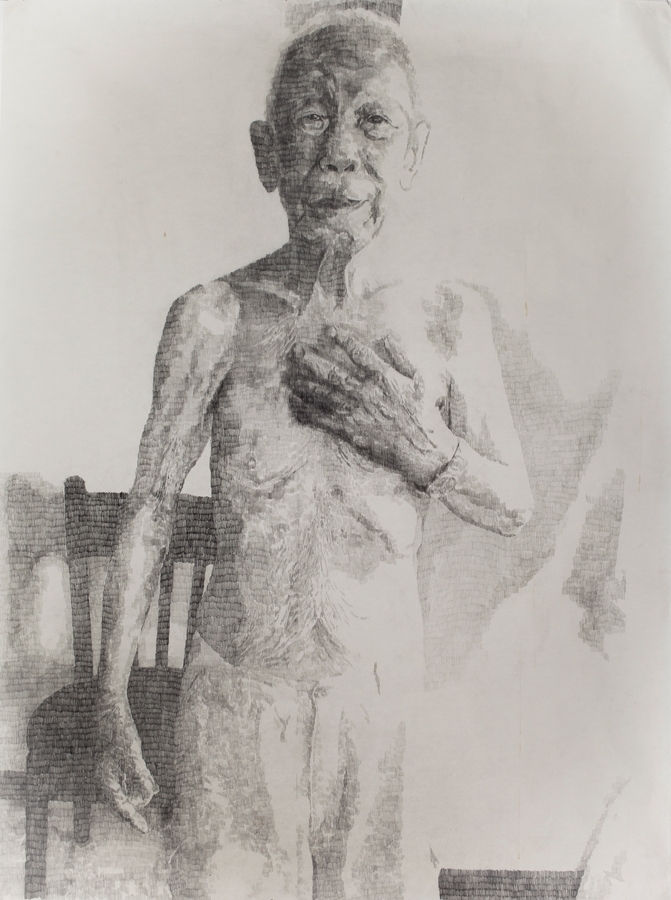Drawing tends to be associated with recording or study; as an act, it is both discipline and practice, and, for some, even thinking. Sketching or depicting from life, for example, has traditionally been considered a way to exercise both eye and hand in terms of seeing and translating what one sees. It had a speed and directness that was unsurpassed till the invention of photography. But, at first glance, Susie Wong’s drawings have none of these qualities: none of the immediacy or intimacy. Her works are the result of tracing enlarged archival images off a lightbox. The result of this process, in which she constructs an image through a series of small staccato marks, is an impression of mechanical reproduction. That is, despite their meticulous, handmade nature, her marks recall the dot matrix of an inkjet printer. In fact, somewhat like Gerhard Richter’s paintings, they seem to hold off a sense of directness and instead convey a quality of mediation.
There are three groups of drawings on view, all on light paper-stock pinned delicately to the wall. The first and largest group are of the Javanese or Sumatran landscape, with lines gleaned from Joseph Conrad novels inscribed under each image; the second consists of two drawings of cherry blossoms; and the final brings together five large images of the artist’s father near the end of his life. For example, in The sun was fierce, the land seemed to glisten and drip with steam (2012), a view of a tree-laden landscape is obscured by steam (as the title suggests), or clouds, or perhaps even smoke. Two thirds of the image undulates under the feathery whiteness of this atmosphere, while below it is the eponymous quote from Conrad’s Heart of Darkness (1899). Are these depictions of a lost landscape? Is Conrad’s writing being used to evoke a colonial past? Are we meant to conclude that memories are fictions? There is an ambiguity about all this.
Despite the regularity of her mark-making, each of these images nevertheless conveys a sensitivity of touch
Despite the regularity of her mark-making, each of these images nevertheless conveys a sensitivity of touch. On the occasional drawing, jotted on the bottom near the image, are numbers corresponding to the types of pencil used. Like the changing weights of the marks – some lighter, some darker – these numbers appear as slight irregularities in an otherwise mechanical process. They are another kind of record: a measure of the hand and perhaps a reminder to the artist of a moment. Taken together these drawings seem like an attempt to gather the past, both as image and as process. It is as if the drawing itself were trying hard to make manifest a memory. This is most evident in Weightless (2012), the quintet of images of her father, a thin, elderly Chinese man, which are near lifesize. Picturing him standing topless and depicted from front, side and back, across five works, they seem like an attempt to record his very presence from all sides. In writing about Van Gogh, the critic John Berger described his drawings as an act of devotion: ‘for him the act of drawing or painting was a way of discovering and demonstrating why he loves so intensely what he was looking at’. Likewise Wong’s ungraspable drawings, pieces of paper pinned to the wall, remind us of the ephemeral nature of memory.
This article was first published in the December 2014 issue.
